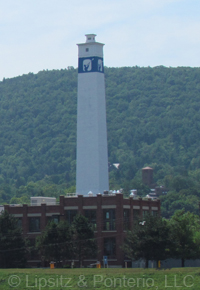Contact us for a free consultation
We hope that you will never be diagnosed with mesothelioma, lung cancer, or suffer a catastrophic injury, but if you are, contact us at Lipsitz, Ponterio & Comerford so we can begin the fight.
Call Today: 866-238-1452 or fill out the online form.
 Founded in 1868 in Corning, New York, Corning Glass Works is a major manufacturer of specialty glass products. Corning Glass operates several manufacturing plants along the Chemung River in the city of Corning, and in towns nearby, such as Horseheads, Big Flats and Painted Post. Originally, Corning manufactured globes and lenses for railroad signal lamps; glass tubing for thermometers; and, other medical applications. In 1908, Corning developed Nonex glass, which was resistant to shattering due to fluctuations in temperature. Corning developed Pyrex in 1915, in response to a decrease in sales of their durable Nonex product. Pyrex was just as durable, and in addition, it was safe to use as cookware because it did not contain lead. Corning manufactured kitchenware under Pyrex, Corningware, and Corelle names until 1998, when it sold its consumer products division to Borden Chemical.
Founded in 1868 in Corning, New York, Corning Glass Works is a major manufacturer of specialty glass products. Corning Glass operates several manufacturing plants along the Chemung River in the city of Corning, and in towns nearby, such as Horseheads, Big Flats and Painted Post. Originally, Corning manufactured globes and lenses for railroad signal lamps; glass tubing for thermometers; and, other medical applications. In 1908, Corning developed Nonex glass, which was resistant to shattering due to fluctuations in temperature. Corning developed Pyrex in 1915, in response to a decrease in sales of their durable Nonex product. Pyrex was just as durable, and in addition, it was safe to use as cookware because it did not contain lead. Corning manufactured kitchenware under Pyrex, Corningware, and Corelle names until 1998, when it sold its consumer products division to Borden Chemical.